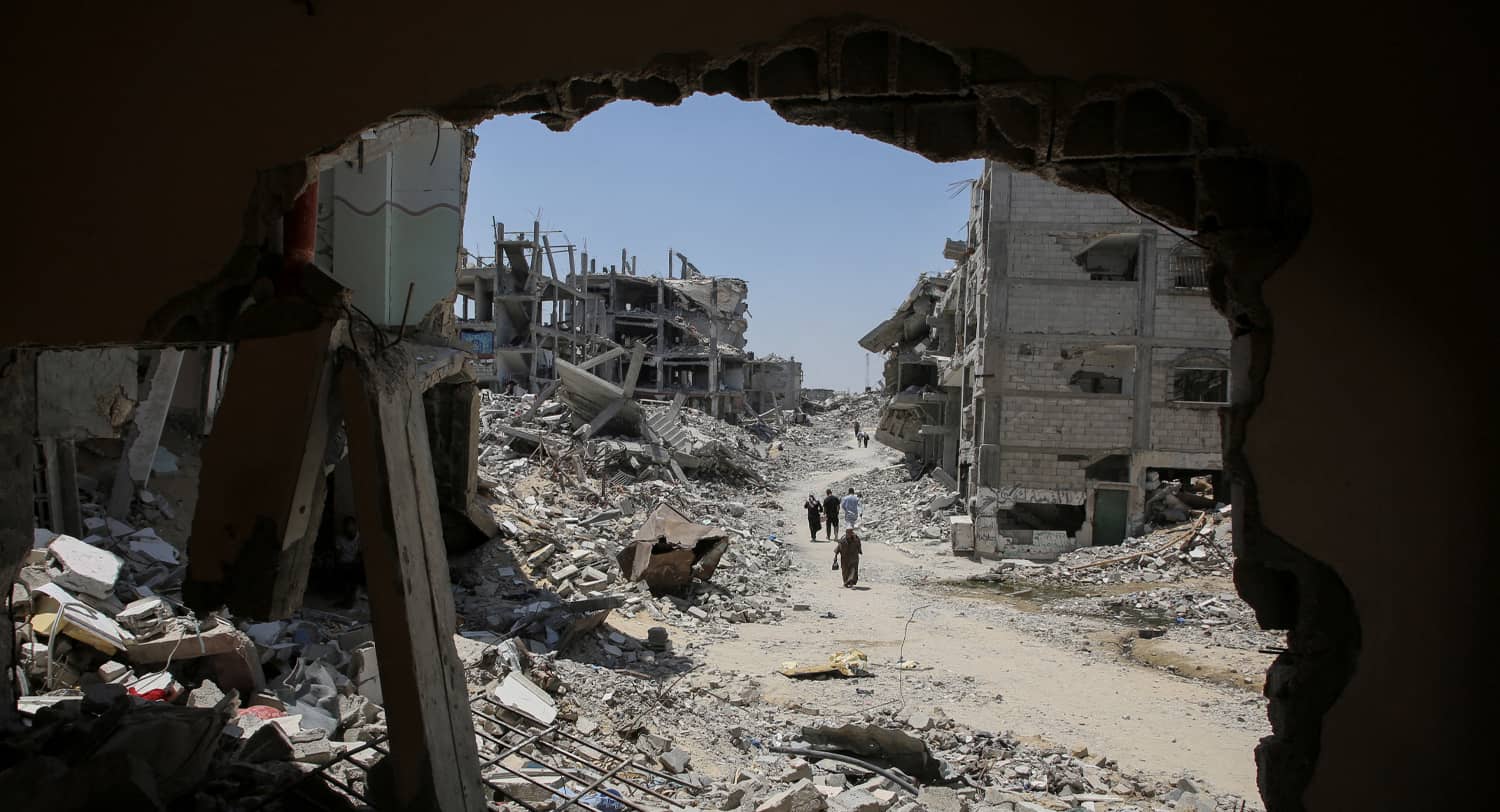The war in Gaza after nine months shows no sign of concluding in the near term. Hamas and other groups in Gaza continue to hold on, after the IDF estimates it has killed or captured 14,000 Hamas members. In every area the IDF left, such as northern Gaza, Hamas returned, albeit in a diminished form. For six months there have been talks about a new deal to end the conflict and release hostages. But Hamas wants a permanent ceasefire so it can regroup and rebuild in Gaza and then launch a new attack. Israel wants the freedom to return to fighting to prevent that scenario.
The IDF continues to fight isolated Hamas units in Rafah, after launching an offensive there on May 6. It continues to operate in the Netzarim corridor south of Gaza City. However, in all the operations, the number of troops needed is not like in the early days of the war when there were five divisions fighting in Gaza. Today the operations are smaller and the enemy is weaker. Nevertheless, there are still three reduced divisions involved in the fight, including one in Rafah, one in Khan Younis and one in Netzarim. The air force is also active every night, striking a dozen or more targets to eliminate threats.
On July 22, the IDF launched yet another raid, this time into the city of Khan Younis, to confront terrorists who had revived operations in a number of neighborhoods. This second battle for Khan Younis, after the first one which lasted from January to April, is designed to degrade terrorists who took up roots in western Khan Younis, along a sector that is part of the Mawasi humanitarian zone.
This is not the first time terrorists were found in the Mawasi safe zone. Earlier in July the IDF targeted Muhammed Deif, the Hamas military commander, and one of his brigade commanders there, in a house near the Mediterranean Sea. The brigade commander was killed and the IDF continues to assess whether Deif was killed as well.

The latest raid in Khan Younis is led by the IDF’s 98th Division, the unit also sent into Jabaliya and Sheijaiya in multi-week raids since May. These raids also went into an area where the IDF had already operated back in December and January. In each case more terrorists were found and more tunnels and terrorist infrastructure was destroyed. The IDF is searching for terrorist infrastructure in refugee camps and the area of Tel al-Sultan. In addition it remains to be seen when the IDF will showcase the tunnels it has found along the Egyptian border.
There are at least two positive narratives put out by the IDF about these raids. One posits that even though the terrorists return, they are weakened each time. Battles that took a month and required multiple IDF brigades and thousands of men, now require hundreds of men in smaller units. Even though it is the 98th Division leading the charge, the division is using less units than in the past. It relies on commandos, paratroopers and heavy tanks, and less on regular infantry, to support the operations.
Another narrative is that the raids let Israel catch the terrorists who return. They have fewer tunnels to hide in and each raid nets new results. In some cases, the bodies of Israeli hostages have been found.
In reality, the raids are beginning to look more like counter-terrorism strikes in the West Bank and less like full-scale military operations. The IDF has carried out around fifty operations, more than one per week, in the area of the West Bank city of Tulkarm since October 7. This is designed to keep Hamas and other groups there from growing tentacles into Nur Shams camp and taking over more of the northern West Bank.
If Gaza is destined for this West Bank model, it’s hard to see it as a long-term success. Even weakened, Hamas and other groups such as the DFLP, PFLP and Palestinian Islamic Jihad, pose a threat. They carry out attacks daily with mortars, rockets, and various types of missiles and RPGs. They try to place explosives and booby-traps.
Israel has said it wants to defeat Hamas and dismantle Hamas capabilities. However, there is a lack of clarity on what that mission means and no articulation of a plan for Gaza after Hamas is defeated. Hamas continues to control the Central Camps area of Gaza, such as Nuseirat, Buraij, Maghazi and Deir al-Balah, areas the IDF has never fully operated in. Hamas continues to recruit and has tunnels and weapons. It has reduced capabilities and, without access to the Rafah border with Egypt, it will have a harder time smuggling anything in. But Hamas has suffered setbacks in the past and rebuilt itself quickly.
Hamas may also have its sights set elsewhere. It recently attended a meeting in China with thirteen other Palestinian factions and it pledged to work toward unity with the other Palestinian groups. It may see unification with Fatah as the opening it wants to control the West Bank.
Israeli communities along the border of Gaza remain partially evacuated. The beach at Zikim adjacent to the northern Gaza Strip, which Hamas gunmen stormed on October 7, remains closed. Rocket fire and mortar fire near the border also continues. Sirens sound usually in one or two communities every day. Some are false alarms, but it keeps people with families from returning. In addition, a lot more investment is needed to secure the Israeli communities. Driving along the border, much seems as it did on October 6, though on the other side of the border the landscape is one of destruction. In Gaza, the rebuilding has not begun.

